_A talk given at the [Shadow Libraries](http://www.sgt.gr/eng/SPG2096/)
symposium held at the National Museum of Contemporary Art (EMST) in
[Athens](/Athens "Athens"), 17 March 2018. Moderated by [Kenneth
Goldsmith](/Kenneth_Goldsmith "Kenneth Goldsmith") (UbuWeb) and bringing
together [Dusan Barok](/Dusan_Barok "Dusan Barok") (Monoskop), [Marcell
Mars](/Marcell_Mars "Marcell Mars") (Public Library), [Peter
Sunde](/Peter_Sunde "Peter Sunde") (The Pirate Bay), [Vicki
Bennett](/Vicki_Bennett "Vicki Bennett") (People Like Us), [Cornelia
Sollfrank](/Cornelia_Sollfrank "Cornelia Sollfrank") (Giving What You Don't
Have), and Prodromos Tsiavos, the event was part of the _[Shadow Libraries:
UbuWeb in Athens](http://www.sgt.gr/eng/SPG2018/) _programme organised by [Ilan
Manouach](/Ilan_Manouach "Ilan Manouach"), Kenneth Goldsmith and the Onassis
Foundation._
This is the first time that I was asked to talk about Monoskop as a _shadow
library_.
What are shadow libraries?
[Lawrence Liang](/Lawrence_Liang "Lawrence Liang") wrote a think piece for _e-
flux_ a couple of years ago,
in response to the closure of Library.nu, a digital library that had operated
from 2004, first as Ebooksclub, later as Gigapedia.
He wrote that:
[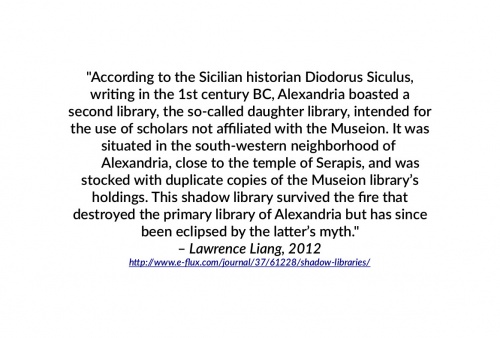](http://www.e-flux.com/journal/37/61228
/shadow-libraries/)
In the essay, he moves between identifying Library.nu as digital Alexandria
and as its shadow.
In this account, even large libraries exist in the shadows cast by their
monumental precedessors.
There’s a lineage, there’s a tradition.
Almost everyone and every institution has a library, small or large.
They’re not necessarily Alexandrias, but they strive to stay relevant.
Take the University of Amsterdam where I now work.
University libraries are large, but they’re hardly _large enough_.
The publishing market is so huge that you simply can’t keep up with all the
niche little disciplines.
So either you have to wait days or weeks for a missing book to be ordered
somewhere.
Or you have some EBSCO ebooks.
And most of the time if you’re searching for a book title in the catalogue,
all you get are its reviews in various journals the library subscribes to.
So my colleagues keep asking me.
Dušan, where do I find this or that book?
You need to scan through dozens of texts, check one page in that book, table
of contents of another book, read what that paper is about.
[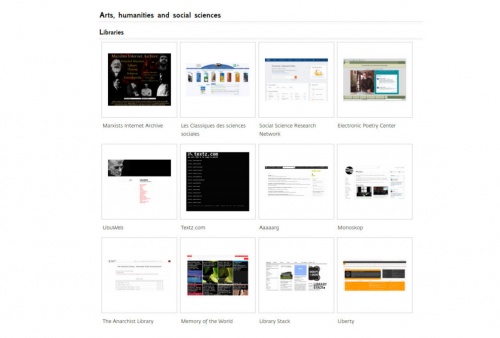](/Digital_libraries#Libraries
"Digital libraries#Libraries")
Or scrapes it from somewhere, since most books today are born digital and live
their digital lives.
...
Digital libraries need to be creative.
They don’t just preserve and circulate books.
[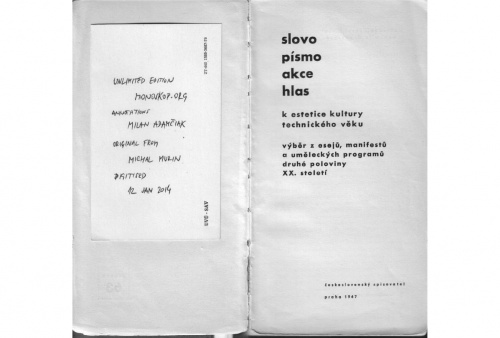](https://monoskop.org/log/?p=10262)
They engage in extending print runs, making new editions, readily
reproducible, unlimited editions.
[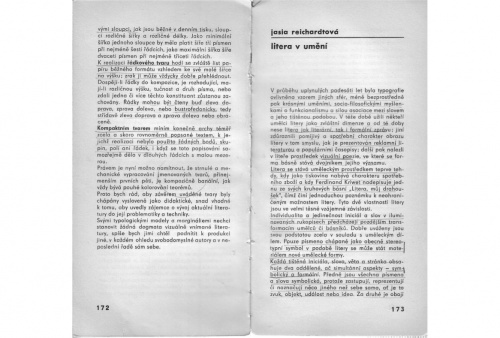](https://monoskop.org/images/d/de/Hirsal_Josef_Groegerova_Bohumila_eds_Slovo_pismo_akce_hlas.pdf#page=87)
This one comes with something extra. Isn’t this beautiful? You can read along
someone else.
In this case we know these annotations come from the Slovak avant-garde visual
poet and composer [Milan Adamciak](/Milan_Adamciak "Milan Adamciak").
[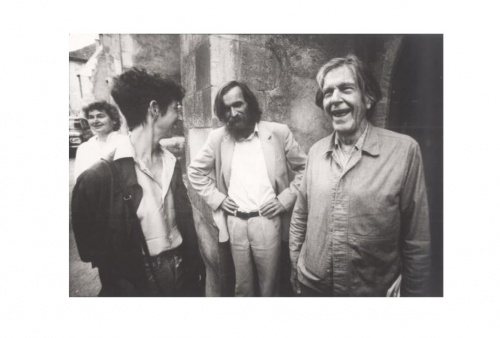](/Milan_Adamciak
"Milan Adamciak")
...standing in the middle.
A couple of pages later...
[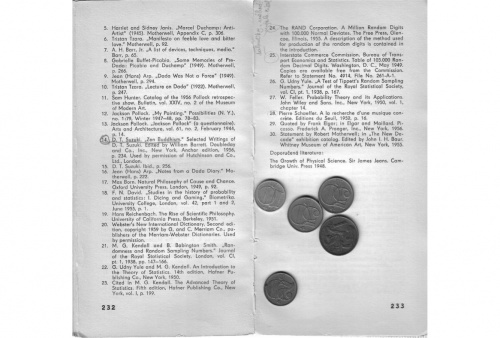](https://monoskop.org/images/d/de/Hirsal_Josef_Groegerova_Bohumila_eds_Slovo_pismo_akce_hlas.pdf#page=117)
...you can clearly see how he found out about a book containing one million
random digits [see note 24 on the image]. The strangest book.
[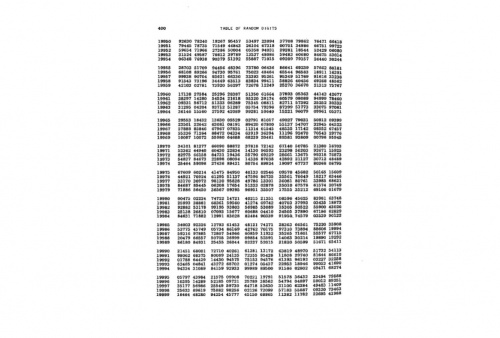](https://monoskop.org/log/?p=5780)
He was still alive when we put it up on Monoskop, and could experience it.
...
Digital libraries may seem like virtual, grey places, nonplaces.
But these little chance encounters happen all the time there.
There are touches. There are traces. There are many hands involved, visible
hands.
They join writers’ hands and help creating new, unlimited editions.
They may be off Google, but for many, especially younger generation these are
the places to go to learn, to share.
Rather than in a shadow, they are out in the open, in plain sight.
[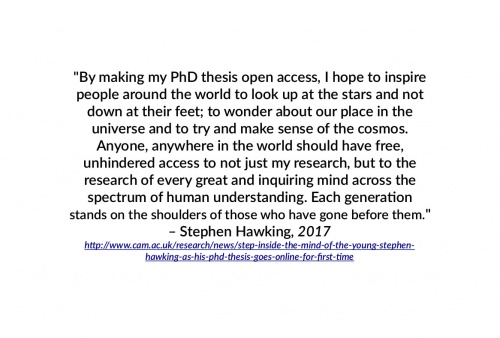](http://www.cam.ac.uk/research/news
/step-inside-the-mind-of-the-young-stephen-hawking-as-his-phd-thesis-goes-
online-for-first-time)
This made rounds last year.
As scholars, as authors, we have reasons to have our works freely accessible
by everyone.
We do it for feedback, for invites to lecture, for citations.
Sounds great.
So when after long two, three, four, five years I have my manuscript ready,
where will I go?
Will I go to an established publisher or an open access press?
Will I send it to MIT Press or Open Humanities Press?
Traditional publishers have better distribution, and they often have a strong
brand.
It’s often about career moves and bios, plans A’s and plan B’s.
There are no easy answers, but one can always be a little inventive.
In the end, one should not feel guilty for publishing with MIT Press.
But at the same time, one should neither feel guilty for scanning and sharing
such a book with others.
...
You know, there’s fighting, there are court cases.
[Aaaaarg](/Aaaaarg "Aaaaarg"), a digital library run by our dear friend [Sean
Dockray](/Sean_Dockray "Sean Dockray"), is facing a Canadian publisher.
Open Library is now facing the Authors Guild for lending scanned books
deaccessioned from libraries.
They need our help, our support.
But collisions of interests can be productive.
This is what our beloved _Cabinet_ magazine did when they found their PDFs
online.
They converted all their articles into HTML and put them online.
The most beautiful takedown request we have ever received.
[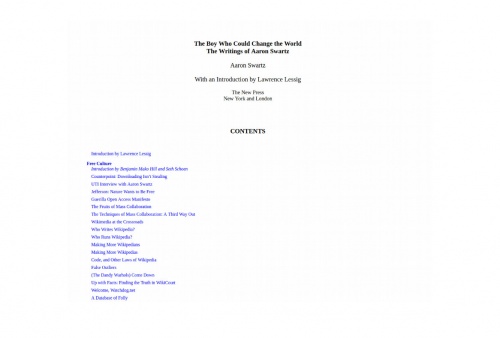](https://monoskop.org/log/?p=16598)
So what is at stake? What are these digital books?
They are poor versions of print books.
They come with no binding, no paper, no weight.
They come as PDFs, EPUBs, JPEGs in online readers, they come as HTML.
By the way, HTML is great, you can search it, copy, save it, it’s lightweight,
it’s supported by all browsers, footnotes too, you can adapt its layout
easily.
That’s completely fine for a researcher.
As a researcher, you just need source code:
you need plain text, page numbers, images, working footnotes, relevant data
and code.
_Data and code_ as well:
this is where online companions to print books come in,
you want to publish your research material,
your interviews, spreadsheets, software you made.
...
Here we distinguish between researchers and readers.
As _readers_ we will always build our beautiful libraries at home, and
elsewhere,
filled with books and... and external harddrives.
...
There may be _no contradiction_ between the existence of a print book in
stores and the existence of its free digital version.
So what we’ve been asking for is access, basic access. The access to culture
and knowledge for research, educational, noncommercial purposes. A low budget,
poor bandwidth access. Access to badly OCR’d ebooks with grainy images. Access
to culture and knowledge _light_.
Thank you.
Dusan Barok
_Written on 16-17 March 2018 in Athens and Amsterdam. Published online on 21
March 2018._
Sekulic
Legal Hacking and Space
2015
# Legal hacking and space
## What can urban commons learn from the free software hackers?
There is now a need to readdress urban commons through the lens of the digital
commons, writes Dubravka Sekulic. The lessons to be drawn from the free
software community and its resistance to the enclosure of code will likely
prove particularly valuable where participation and regulation are concerned.
> Commons are a particular type of institutional arrangement for governing the
use and disposition of resources. Their salient characteristic, which defines
them in contradistinction to property, is that no single person has exclusive
control over the use and disposition of any particular resource. Instead,
resources governed by commons may be used or disposed of by anyone among some
(more or less defined) number of persons, under rules that may range from
"anything goes" to quite crisply articulated formal rules that are effectively
enforced.
> (Benkler 2003: 6)
The above definition of commons, from the seminal paper "The political economy
of commons" by Yochai Benkler, addresses any type of commons, whether analogue
or digital. In fact, the concept of commons entered the digital realm from
physical space in order to interpret the type of communities, relationships
and production that started to appear with the development of the free as
opposed to the proprietary. Peter Linebaugh charted in his excellent book
_Magna Carta Manifesto_ , how the creation and development of the concept of
commons were closely connected to constantly changing relationships of people
and communities to the physical space. Here, I argue that the concept was
enriched when it was implemented in the digital field. Readdressing urban
space through the lens of digital commons can enable another imagination and
knowledge to appear around urban commons.
[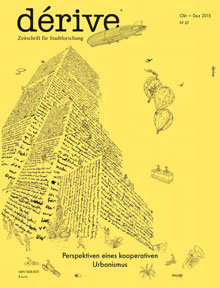](http://www.derive.at/)The
notion of commons in (urban) space is often complicated by archaic models of
organization and management - "the pasture we knew how to share". There is a
tendency to give the impression that the solution is in reverting to the past
models. In the realm of digital though, there is no "pasture" from the Middle
Ages to fall back on. Digital commons had to start from scratch and define its
own protocols of production and reproduction (caring and sharing). Therefore,
the digital commons and free software community can be the one to turn to, not
only for inspiration and advice, but also as a partner when addressing
questions of urban commons. Or, as Marcell Mars would put it "if we could
start again with (regulating and defining) land, knowing what we know now
about digital networks, we could come up with something much better and
appropriate for today's world. That property wouldn't be private, maybe not
even property, but something else. Only then can we say we have learned
something from the digital" (2013).
## Enclosure as the trigger for action
The moment we turn to commons in relation to (urban) space is the moment in
which the pressure to privatize public space and to commodify every aspect of
urban life has become so strong that it can be argued that it mirrors a moment
in which Magna Carta Libertatum was introduced to protect the basic
reproduction of life for those whose sustenance was connected to the common
pastures and forests of England in the thirteenth century. At the end of the
twentieth century, urban space became the ultimate commodity, and increasing
privatization not only endangered the reproduction of everyday life in the
city; the rent extraction through privatized public space and housing
endangered bare life itself. Additionally, the cities' continuous
privatization of its amenities transformed almost every action in the city, no
matter how mundane - as for example, drinking a glass of water from a tap -,
into an action that creates profit for some private entity and extracts it
from the community. Thus every activity became labour, which a citizen-worker
is not only alienated from, but also unaware of. David Harvey's statement
about the city replacing the factory as a site of class war seems to be not
only an apt description of the condition of life in the city, but also a cry
for action.
When Richard Stallman turned to the foundational gesture of the creation of
free software, GNU/GPL (General Public Licence) was his reaction to the
artificially imposed logic of scarcity on the world of code - and the
increasing and systematic enclosure that took place in the late 1970s and
1980s as "a tidal wave of commercialization transformed software from a
technical object into a commodity, to be bought and sold on the open market
under the alleged protection of intellectual property law" (Coleman 2012:
138). Stallman, who worked as a researcher at MIT's Artificial Intelligence
Laboratory, detected how "[m]any programmers are unhappy about the
commercialization of system software. It may enable them to make more money,
but it requires them to feel in conflict with other programmers in general
rather than feel as comrades. The fundamental act of friendship among
programmers is the sharing of programs; marketing arrangements now typically
used essentially forbid programmers to treat others as friends. The purchaser
of software must choose between friendship and obeying the law. Naturally,
many decide that friendship is more important. But those who believe in law
often do not feel at ease with either choice. They become cynical and think
that programming is just a way of making money" (Stallman 2002: 32).
In the period between 1980 and 1984, "one man [Stallman] envisioned a crusade
to change the situation" (Moglen 1999). Stallman understood that in order to
subvert the system, he would have to intervene in the protocols that regulate
the conditions under which the code is produced, and not the code itself;
although he did contribute some of the best lines of code into the compiler
and text editor - the foundational infrastructure for any development. The
gesture that enabled the creation of a free software community that yielded
the complex field of digital commons was not a perfect line of code. The
creation of GNU General Public License (GPL) was a legal hack to counteract
the imposing of intellectual property law on code. At that time, the only
license available for programmers wanting to keep the code free was public
domain, which gave no protection against the code being appropriated and
closed. GPL enabled free codes to become self-perpetuating. Everything built
using a free code had to be made available under the same condition, in order
to secure the freedom for programmers to continue sharing and not breaking the
law. "By working on and using GNU rather than proprietary programs, we can be
hospitable to everyone and obey the law. In addition, GNU serves as an example
to inspire and as a banner to rally others to join in sharing. This can give
us a feeling of harmony, which is impossible if we use software, which is not
free. For about half the programmers I talk to, this is an important happiness
that money cannot replace" (Stallman 2002: 33).
Architects and planners as well as environmental designers have for too long
believed the opposite, that a good enough design can subvert the logic of
enclosure that dominates the production and reproduction of space; that a good
enough design can keep space open and public by the sheer strength of spatial
intervention. Stallman rightfully understands that no design is strong enough
to keep private ownership from claiming what it believes belongs to it.
Digital and urban commons, despite operating in completely different realms
and economies, are under attack from the same threat of "market processes"
that "crucially depend upon the individual monopoly of capitalists (of all
sorts) over ownership of the means of production, including finance and land.
All rent, recall, is a return to the monopoly power of private ownership of
some crucial asset, such as land or a patent. The monopoly power of private
property is therefore both the beginning-point and the end-point of all
capitalist activity" (Harvey 2012: 100). Stallman envisioned a bleak future
(2003: 26-28) but found a way to "relate the means to the ends". He understood
that the emancipatory task of a struggle "is not only what has to be done, but
also how it will be done and who will do it" (Stavrides & De Angelis: 7).
Thus, to produce the necessary requirements - both for a community to emerge,
but also for the basis of future protocols - tools and methodologies are
needed for the community to create both free software and itself.
## Renegotiating (undoing) property, hacking the law, creating community
Property, as an instrument of allocation of resources, is a right that is
negotiated within society and by society and not written in stone or given as
such. The digital, more than any other field, discloses property as being
inappropriate for contemporary relationships between production and
reproduction and, additionally, proves how it is possible to fundamentally
rethink it. The digital offers this possibility as it is non-material, non-
rival and non-exclusive (Meretz 2013), unlike anything in the physical world.
And Elinor Ostrom's lifelong empirical researches give ground to the belief
that eschewing property, being the sole instrument of allocation, can work as
a tool of management even for rival, excludable goods.
The value of information in digital form is not flat, but property is not the
way to protect that value, as the music industry realized during the course of
the last ten years. Once the copy is _out there_ , the cost of protecting its
exclusivity on the grounds of property becomes too high in relation to the
potential value to be extracted. For example, the value is extracted from
information through controlling the moment of its release and not through
subsequent exploitation. Stallman decided to tackle the imposition of the
concept of property on computer code (and by extension to the digital realm as
a whole) by articulating it in another field: just as property is the product
of constant negotiations within a society, so are legal regulations. After
some time, he was joined by "[m]any free software developers [who] do not
consider intellectual property instruments as the pivotal stimulus for a
marketplace of ideas and knowledge. Instead, they see them as a form of
restriction so fundamental (or poorly executed) that they need to be
counteracted through alternative legal agreements that treat knowledge,
inventions, and other creative expressions not as property but rather as
speech to be freely shared, circulated, and modified" (Coleman 2012: 26).
The digital sphere can give a valid example of how renegotiating regulation
can transform a resource from scarce to abundant. When the change from
analogue signal to packet switching begun to take effect, the distribution of
finite territory and the way the radio frequency spectrum was managed got
renegotiated and the amount of slots of space to be allocated grew by an order
of magnitude while the absolute size of the spectrum stayed the same. This
shift enabled Brecht's dream of a two-sided radio to become reality, thus
enabling what he had suggested: "change this apparatus over from distribution
to communication".1
According to Lawrence Lessig, what regulates behavior in cyberspace is an
interdependence of four constraints: market, law, architecture and norms
(Lessig 2012: 121-25). Analogously, space can be put in place of cyberspace,
as the regulation of space is the sum of these four constraints. These four
constraints are in a dynamic relationship in which the balance can be tilted
towards one, depending on how much each of these categories puts pressure on
the other three. Changes in any one reflect the regulation of the whole.
"Architecture" in Lessig's theory should be understood broadly as the "built
environment" that regulates behaviour in (cyber)space. In the last few decades
we have experienced the domination of the market reconfiguring the basis of
norms, law and architecture. In order to counteract this, the other three
constraints need to be re-negotiated. In digital space, this reconfiguration
happened by declaring the code - that is, the set of instructions written as
highly formalized text in a specific programming language to be executed
(usually) by the computer - to be considered as speech in front of the law,
and by hacking the law in order to disrupt the way that property relationships
are formed.
To put it simply, in order to create a change in dynamics between the
architecture, norms and the market, the law had to be addressed first. This is
not a novel procedure, "legal hacking is going on all the time, it is just
that politics is doing it under the veil of legality because they are the
parliament, they are Microsoft, which can hire a whole law firm to defend them
and find all the legal loopholes. Legal hacking is the norm actually" (Bailey
2013). When it comes to physical space, one of the most obvious examples of
the reconfiguration of regulations under the influence of the market is to
create legal provisions, norms and architecture to sustain the concept of
developing (and privatizing) public space through public-private partnerships.
The decision of the Italian parliament that the privatization of services
(specifically of water management) is legal and does not obstruct one's access
to water as a human right, is another example of a crude manipulation of the
law by the state in favour of the market. Unlike legal hacks by corporations
that aim to create a favourable legal climate for another round of
accumulation through dispossession, Stallman's hack tries to limit the impact
of the market and to create a space of freedom for the creation of a code and
of sharable knowledge, by questioning one of the central pillars of liberal
jurisprudence: (intellectual) property law.
Similarly, translated into physical space, one of the initiatives in Europe
that comes closest to creating a real existing urban commons, Teatro Valle
Occupato in Rome, is doing the same, "pushing the borders of legality of
private property" by legally hacking the institution of a foundation to "serve
a public, or common, purpose" and having "notarized [a] document registered
with the Italian state, that creates a precedent for other people to follow in
its way" (Bailey 2013). Sounds familiar to Stallman's hack as the fundamental
gesture by which community and the whole eco-system can be formed.
It is obvious that, in order to create and sustain that type of legal hack, it
is a necessity to have a certain level of awareness and knowledge of how
systems, both political and legal, work, i.e. to be politically literate.
"While in general", says Italian commons-activist and legal scholar Saki
Bailey, "we've become extremely lazy [when it comes to politics]. We've
started to become a kind of society of people who give up their responsibility
to participate by handing it over to some charismatic leaders, experts of [a]
different type" (2013). Free software hackers, in order to understand and take
part in a constant negotiation that takes place on a legal level between the
market that seeks to cloister the code and hackers who want to keep it free,
had to become literate in an arcane legal language. Gabriella Coleman notes in
_Coding Freedom_ that hacker forums sometimes tend to produce legal analysis
that is just as serious as one would expect to find in a law office. Like the
occupants of Teatro Valle, free software hackers understand the importance of
devoting time and energy to understand constraints and to find ways to
structurally divert them.
This type of knowledge is not shared and created in isolation, but in
socialization, in discussions in physical or cyber spaces (such as #irc chat
rooms, forums, mailing lists…), the same way free software hackers share their
knowledge about code. Through this process of socializing knowledge, "the
community is formed, developed, and reproduced through practices focused on
common space. To generalize this principle: the community is developed through
commoning, through acts and forms of organization oriented towards the
production of the common" (Stavrides 2012: 588). Thus forming a community is
another crucial element of the creation of digital commons, but even more
important are its development and resilience. The emerging community was not
given something to manage, it created something together, and together devised
rules of self-regulation and decision-making.
The prime example of this principle in the free software community is the
Debian Project, formed around the development of the Debian Linux
distribution. It is a volunteer organization consisting of around 3,000
developers that since its inception in 1993 has defined a set of basic
principles by which the project and its members conduct their affairs. This
includes the introduction of new people into the community, a process called
Debian Social Contract (DSC). A special part of the DSC defines the criteria
for "free software", thus regulating technical aspects of the project and also
technical relations with the rest of a free software community. The Debian
Constitution, another document created by the community so it can govern
itself, describes the organizational structure for formal decision-making
within the project.
Another example is Wikipedia, where the community that makes the online
encyclopedia also takes part in creating regulations, with some aspects
debated almost endlessly on forums. It is even possible to detect a loose
community of "Internet users" who took to the streets all over the world when
SOPA (Stop Online Piracy Act) and PIPA (Preventing Real Online Threats to
Economic Creativity and Theft of Intellectual Property Act) threatened to
enclose the Internet, as we know it; the proposed legislation was successfully
contested.
Free software projects that represent the core of the digital commons are most
of the time born of the initiative of individuals, but their growth and life
cycle depend on the fact that they get picked up by a community or generate
community around them that is allowed to take part in their regulation and in
decisions about which shape and forms the project will take in the future.
This is an important lesson to be transferred to the physical space in which
many projects fail because they do not get picked up by the intended
community, as the community is not offered a chance to partake in its creation
and, more importantly, its regulation.
## Building common infrastructure and institutions
"The expansion of intellectual property law" as the main vehicle of the trend
to enclose the code that leads to the act of the creation of free software
and, thus, digital commons, "is part and parcel of a broader neoliberal trend
to privatize what was once under public or under the state's aegis, such as
health provision, water delivery, and military services" (Coleman 2012: 16).
The structural fight headed by the GNU/GPL against the enclosure of code
"defines the contractual relationship that serves to secure the freedom of
means of production and to constitute a community of those participating in
the production and reproduction of free resources. And it is this constitutive
character, as an answer to an every time singular situation of appropriation
by the capital, that is a genuine political emancipation striving for an equal
and free collective production" (Mars & Medak 2004). Thus digital commons "is
based on the _communication_ among _singularities_ and emerges through
collaborative social processes of production " (Negri & Hardt 2005: 204).
The most important lesson urban commons can take from its digital counterpart
is at the same time the most difficult one: how to make a structural hack in
the moment of the creation of an urban commons that will enable it to become
structurally self-perpetuating, thus creating fertile ground not only for a
singular spatialization of urban commons to appear, but to multiply and create
a whole new eco-system. Digital commons was the first field in which what
Negri and Hardt (2009: 3-21) called the "republic of property" was challenged.
Urban commons, in order to really emerge as a spatialization of a new type of
relationship, need to start undoing property as well in order to socially re-
appropriate the city. Or in the words of Stavros Stavrides "the most urgent
and promising task, which can oppose the dominant governance model, is the
reinvention of common space. The realm of the common emerges in a constant
confrontation with state-controlled 'authorized' public space. This is an
emergence full of contradictions, perhaps, quite difficult to predict, but
nevertheless necessary. Behind a multifarious demand for justice and dignity,
new roads to collective emancipation are tested and invented. And, as the
Zapatistas say, we can create these roads only while walking. But we have to
listen, to observe, and to feel the walking movement. Together" (Stavrides
2012: 594).
The big task for both digital and urban commons is "[b]uilding a core common
infrastructure [which] is a necessary precondition to allow us to transition
away from a society of passive consumers buying what a small number of
commercial producers are selling. It will allow us to develop into a society
in which all can speak to all, and in which anyone can become an active
participant in political, social and cultural discourse" (Benkler 2003: 9).
This core common infrastructure has to be porous enough to include people that
are not similar, to provide "a ground to build a public realm and give
opportunities for discussing and negotiating what is good for all, rather than
the idea of strengthening communities in their struggle to define their own
commons. Relating commons to groups of "similar" people bears the danger of
eventually creating closed communities. People may thus define themselves as
commoners by excluding others from their milieu, from their own privileged
commons." (Stavrides 2010). If learning carefully from digital commons, urban
commons need to be conceptualized on the basis of the public, with a self-
regulating community that is open for others to join. That socializes
knowledge and thus produces and reproduces the commons, creating a space for
political emancipation that is capable of judicial arguments for the
protection and extension of regulations that are counter-market oriented.
## References
Bailey, Saki (2013): Interview by Dubravka Sekulic and Alexander de Cuveland.
Benkler, Yochai (2003): "The political economy of commons". _Upgrade_ IV, no.
3, 6-9, [www.benkler.org/Upgrade-
Novatica%20Commons.pdf](http://www.benkler.org/Upgrade-
Novatica%20Commons.pdf).
Benkler, Yochai (2006): _The Wealth of Networks: How Social Production
Transforms Markets and Freedom_. New Haven: Yale University Press.
Brecht, Bertolt (2000): "The radio as a communications apparatus". In: _Brecht
on Film and Radio_ , edited by Marc Silberman. Methuen, 41-6.
Coleman, E. Gabriella (2012): _Coding Freedom: The Ethics and Aesthetics of
Hacking_. Princeton University Press / Kindle edition.
Hardt, Michael and Antonio Negri (2005): _Multitude: War and Democracy in the
Age of Empire_. Penguin Books.
Hardt, Michael and Antonio Negri (2011): _Commonwealth_. Belknap Press of
Harvard University Press.
Harvey, David (2012): The Art of Rent. In: _Rebel Cities: From the Right to
the City to the Urban Revolution_ , 1st ed. Verso, 94-118.
Hill, Benjamin Mako (2012): Freedom for Users, Not for Software. In: Bollier,
David & Helfrich, Silke (Ed.): _The Wealth of the Commons: a World Beyond
Market and State_. Levellers Press / E-book.
Lessig, Lawrence (2012): _Code: Version 2.0_. Basic Books.
Linebaugh, Peter (2008): _The Magna Carta Manifesto: Liberties and Commons for
All_. University of California Press.
Mars, Marcell (2013): Interview by Dubravka Sekulic.
Mars, Marcell and Tomislav Medak (2004): "Both devil and gnu",
[www.desk.org:8080/ASU2/newsletter.Zarez.N5M.MedakRomicTXT.EnGlish](http://www.desk.org:8080/ASU2/newsletter.Zarez.N5M.MedakRomicTXT.EnGlish).
Martin, Reinhold (2013): "Public and common(s): Places: Design observer",
[placesjournal.org/article/public-and-
commons](https://placesjournal.org/article/public-and-commons).
Meretz, Stefan (2010): "Commons in a taxonomy of goods", [keimform.de/2010
/commons-in-a-taxonomy-of-goods](http://keimform.de/2010/commons-in-a
-taxonomy-of-goods/).
Moglen, Eben (1999): "Anarchism triumphant: Free software and the death of
copyright", First Monday,
[firstmonday.org/ojs/index.php/fm/article/view/684/594](http://firstmonday.org/ojs/index.php/fm/article/view/684/594).
Stallman, Richard and Joshua Gay (2002): _Free Software, Free Society:
Selected Essays of Richard M. Stallman_. GNU Press.
Stallman, Richard and Joshua Gay (2003): "The Right to Read". _Upgrade_ IV,
no. 3, 26-8.
Stavrides, Stavros (2013): "Contested urban rhythms: From the industrial city
to the post-industrial urban archipelago". _The Sociological Review_ 61,
34-50.
Stavrides, Stavros, and Massimo De Angelis (2010): "On the commons: A public
interview with Massimo De Angelis and Stavros Stavrides". _e-flux_ 17, 1-17,
[www.e-flux.com/journal/on-the-commons-a-public-interview-with-massimo-de-
angelis-and-stavros-stavrides/](http://www.e-flux.com/journal/on-the-commons-a
-public-interview-with-massimo-de-angelis-and-stavros-stavrides/).
1
"[...] radio is one-sided when it should be two-. It is purely an apparatus
for distribution, for mere sharing out. So here is a positive suggestion:
change this apparatus over from distribution to communication". See "The radio
as a communications apparatus", Brecht 2000.
Published 4 November 2015
Original in English
First published by derive 61 (2015)